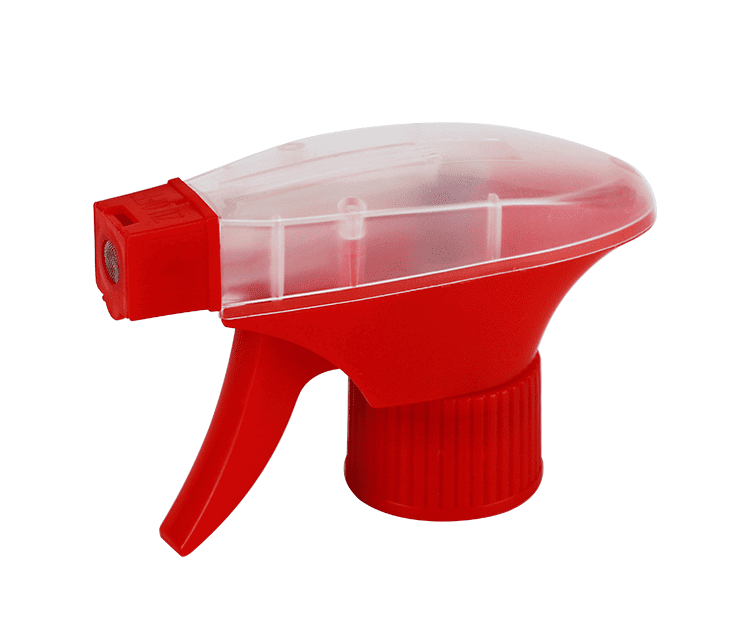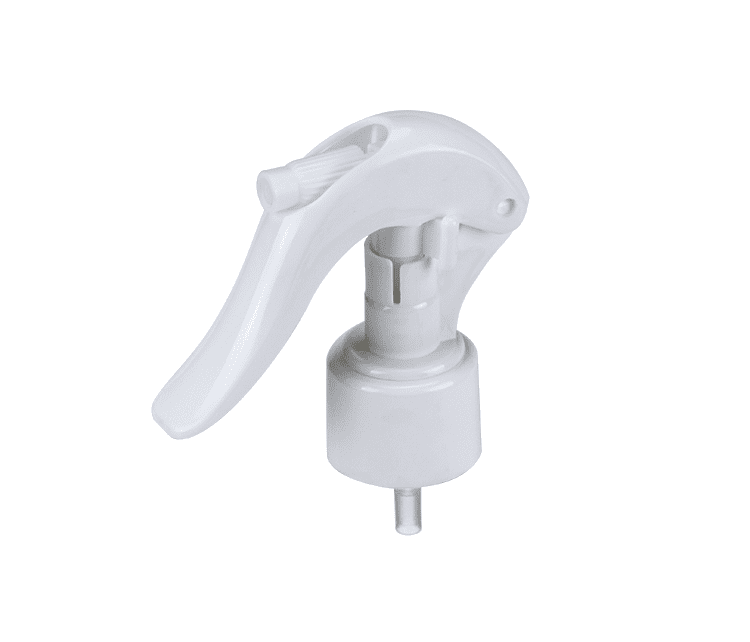- Whatsapp: +8613732201621
- Email: [email protected]
A trigger sprayer is a manually operated device that attaches to the top of a bottle, allowing the user to dispense liquid in the form of a spray, stream, or mist. Often used with plastic bottles, it’s activated by pulling a trigger, which pumps the liquid through a nozzle.

Understanding the spray bottle components is essential when choosing the right sprayer for your product. A standard trigger sprayer consists of the following spray parts:
Nozzle: Controls the spray pattern (mist, stream, or off).
Trigger: The user-operated lever that initiates pumping.
Pump Mechanism: Draws liquid from the bottle and sends it through the nozzle.
Dip Tube: A long plastic tube that reaches into the liquid and brings it to the pump.
Closure/Cap: Connects the sprayer to the bottle, typically available in various sizes to fit standard neck finishes.
Versatile Dispensing: Adjustable nozzles offer a variety of spray outputs.
Controlled Usage: Users can control the amount of product dispensed.
Ergonomic Design: Designed for ease of use and hand comfort.
Cost-Effective: Durable and refillable, reducing packaging waste.
Customizable: Available in multiple colors and styles for branding or product differentiation.
Trigger sprayers are widely used across multiple industries due to their convenience and efficiency. Below are the key application areas:
Trigger sprayers are commonly found in cleaning products, such as:
Glass cleaners
Disinfectants
Surface degreasers
Air fresheners
Their ease of use and control make them ideal for everyday household chores.
In gardening, trigger sprayers are used for:
Fertilizers
Insecticides
Herbicides
Plant mists
They provide an even distribution of liquids and help reduce product waste.
Cosmetic brands use trigger sprayers for:
Hair sprays
Body mists
Facial toners
Setting sprays
They deliver fine mist applications, enhancing the user experience.
In industrial settings, trigger sprayers are often used for:
Solvents
Degreasers
Maintenance fluids
Cleaning solutions
Durable components ensure performance even with harsh chemicals.
For vehicle care, trigger sprayers are ideal for:
Glass cleaners
Tire shines
Interior protectants
Engine degreasers
They offer targeted application, reducing overspray and waste.
In pet grooming, trigger sprayers are used for:
Deodorizers
Coat conditioners
Tick and flea treatments
Gentle misting options make them safe and comfortable for animals.

Selecting the correct trigger spray depends on several factors:
Chemical Compatibility: Ensure materials (like the dip tube or ball valve) are suitable for your liquid.
Spray Output: Choose an output rate (e.g., 0.7cc to 1.6cc) based on how much product needs to be dispensed per spray.
Nozzle Style: Decide whether you need a mist, stream, foam, or adjustable spray.
Dip Tube Length: Should be tailored to bottle size and product viscosity.
Closure Size: Make sure the sprayer fits your bottle’s neck finish.
Filling Method Compatibility: Consider whether your production line is manual or automated, which may affect sprayer choice.
Consulting with a packaging expert can also help you avoid compatibility issues and ensure optimal performance.
A trigger sprayer may seem like a simple component, but it plays a vital role in product performance, user satisfaction, and brand differentiation. By understanding its spray parts, applications, and selection criteria, you can ensure your product stands out and performs reliably. Whether you’re packaging a household cleaner or a high-end facial mist, the right trigger spray makes all the difference.
At HTX PACK, we specialize in delivering high-quality trigger spray solutions tailored to diverse industries — from household cleaning and cosmetics to industrial maintenance and agriculture. With a focus on innovation, material compatibility, and ergonomic design, our spray bottle components are trusted by brands looking for performance and reliability.
Privacy Policy | SiteMap
Copyright Hangzhou Hangtianxia Bio Tech Co.,Ltd